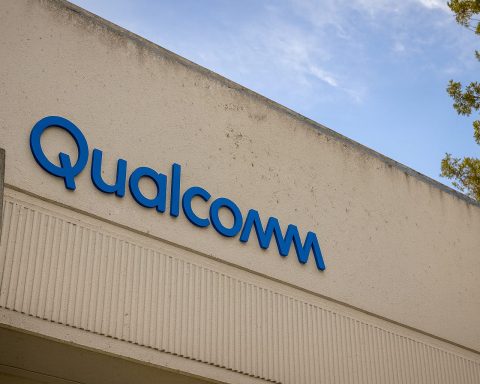- Uruguay’s internet penetration is about 89.9–90% of the population as of 2024, one of the highest in the Americas.
- In 2023 fixed broadband subscriptions totaled about 1.10 million (32 per 100 people), with 81% of those connections delivered via fiber to the home (FTTH).
- As of early 2024, Uruguay had 6.59 million mobile connections (192.6% of the population), with around 4 million active mobile broadband subscriptions (roughly 110% of the population).
- 4G LTE networks reach about 94% of the population, and 5G spectrum was auctioned in 2023 after a pilot in 2019, with ANTEL committing about $43 million in 2023 to deploy 5G base stations.
- Median fixed broadband download speed is about 139.1 Mbps, while median mobile download speed is about 61.6 Mbps, measured in early 2024.
- Plan Ceibal, launched in 2007, distributed about 450,000 laptops in its first four years and provided the XO Ceibalitas to public school students and teachers with free internet in schools.
- ANTEL’s fiber rollout has largely replaced copper, with about 80% of households online by 2021 and 71% of those connections via fiber, and by 2023 about 82% of households were fiber-passed with over 80% of fixed broadband via fiber.
- International connectivity includes the Monet and Tannat undersea cables completed in 2017–2018 linking Uruguay and Brazil to the U.S., and Google’s Firmina cable added in 2023.
- In 2022 Uruguay ended the fixed internet monopoly by authorizing private ISPs to offer broadband, allowing five cable operators to enter with triple-play services under URSEC oversight.
- The Digital Agenda 2025, approved in May 2021, aims to extend fiber to smaller localities (under 3,000 inhabitants), assign new spectrum, expand 5G coverage, and promote digital services like telehealth and e-government.
Uruguay, a small South American nation of 3.4 million people, has quietly become a regional leader in internet connectivity and digital inclusion. With a tech-literate population and ambitious public initiatives, Uruguay boasts one of Latin America’s highest internet penetration rates (around 90% of people online) [1]. Over the past decade, the country has undergone a “quiet digital revolution” – extending high-speed access via fiber-optic cables to even small towns, achieving near-universal mobile broadband coverage, and embracing new technologies like 5G and satellite internet. This report examines the state of internet access in Uruguay across fixed, mobile, and satellite domains, detailing current coverage and usage statistics, the government policies that enabled this progress, infrastructure investments and technologies used, the advent of satellite services “reaching the sky,” efforts to bridge the urban–rural digital divide, challenges faced, and future opportunities.
Penetration Rates and Coverage Statistics
Uruguay’s internet adoption is among the highest in the Americas. Nearly 90% of the population uses the internet, up from roughly 80% a few years prior [2] [3]. Fixed broadband connections (home and business internet subscriptions) numbered about 1.1 million in 2023 – roughly 32 subscriptions per 100 people [4] – indicating that a large majority of households have a broadband connection. Mobile internet is even more ubiquitous: as of early 2024 Uruguay had 6.59 million mobile connections, equivalent to 192.6% of the population (many people have multiple SIM cards/devices) [5]. Active mobile broadband subscriptions are estimated around 4 million, exceeding 110% penetration [6]. The table below summarizes key connectivity indicators:
| Indicator | Value (Year) |
|---|---|
| Population with internet access | 89.9% of population (2024) [7] |
| Households with broadband (fixed) | ~88% of households (2023) [8] |
| Fixed broadband subscriptions | 1.10 million (32 per 100 people, 2023) [9] |
| …of which FTTH (fiber) | 81% of fixed subs (highest in Americas, 2023) [10] |
| Mobile connections (SIM cards) | 6.59 million (192.6% of pop, 2024) [11] |
| Mobile broadband penetration | ~110% of population (2023) [12] |
| 4G LTE population coverage | ~94% (2023) [13] |
| 5G availability | Limited pilot launched 2019; spectrum auctioned 2023 [14] |
| Median fixed broadband speed | 139.1 Mbps download (early 2024) [15] |
| Median mobile download speed | 61.6 Mbps (early 2024) [16] |
Uruguay’s communications infrastructure offers broad coverage: virtually 100% of the country is covered by a digital telephone network and basic mobile signal [17]. LTE (4G) networks reach ~94% of the population [18], ensuring that nearly all Uruguayans, even outside cities, have access to mobile data service. Fixed broadband is widely available in urban areas and most towns, thanks to extensive fiber deployment by the national telecom (ANTEL). By 2023 Uruguay achieved the highest fiber-to-the-home (FTTH) penetration in the Americas, with over four-fifths of broadband subscriptions being delivered via fiber optics [19]. This reflects the country’s success in upgrading old DSL lines to fiber and expanding the network’s reach. As a result, Uruguay’s average internet speeds are excellent: recent measurements show median downloads of ~139 Mbps on fixed broadband (far above regional averages) and ~62 Mbps on mobile connections [20]. Such metrics highlight Uruguay’s quiet transformation into a digital frontrunner.
Government Policies and Programs Driving Connectivity
Uruguay’s connectivity revolution is rooted in proactive government policies and innovative programs that date back over a decade:
- Plan Ceibal (One Laptop per Child): Launched in 2007, Plan Ceibal was a pioneering initiative to bridge the digital divide in education. The government provided every public school student and teacher with a personal laptop (the iconic green XO “Ceibalitas”) and ensured free internet access in all schools nationwide [21] [22]. In its first four years, Plan Ceibal distributed about 450,000 laptops and connected even remote rural schools to the internet, fundamentally asserting that every student has a right to connectivity [23]. This program dramatically increased digital literacy and internet use among Uruguay’s youth, laying the groundwork for a society comfortable with technology. Plan Ceibal’s success also spurred complementary efforts, such as teacher training in digital tools and the creation of digital educational content, ensuring that connectivity translated into meaningful use [24].
- Universal Broadband and ANTEL’s Role: Uruguay’s state-owned telecom operator, ANTEL (Administración Nacional de Telecomunicaciones), has been the chief architect of infrastructure expansion. Guided by a public service mandate, ANTEL invested heavily to extend broadband to virtually all corners of the country. In the early 2010s, it embarked on an ambitious fiber-optic rollout, replacing copper lines with fiber-to-the-home. By investing hundreds of millions of dollars (over US$800 million by one estimate) in fiber deployment, ANTEL was expected to achieve nationwide FTTP coverage by 2022 [25]. Indeed, by end of 2021 ANTEL already provided internet access to 80% of all households, and 71% of those connections were via fiber [26]. This national broadband network – largely fiber-based – is the backbone of Uruguay’s high connectivity rates. ANTEL also built robust backhaul infrastructure and international links, including partnering with Google to land undersea fiber cables (the “Monet-Tannat” cable in 2018 and the new Firmina cable in 2023) to improve global internet connectivity [27] [28].
- Regulatory Reform – Ending the Monopoly: For decades, ANTEL held a legal monopoly on fixed internet services. In 2022, the government enacted a major policy change by authorizing private ISPs (cable TV companies) to offer broadband [29] [30]. This ended a half-century monopoly and allowed five cable operators to enter the market with “triple-play” (TV, phone, internet) offerings. The reform, overseen by the telecom regulator URSEC, is expected to spur competition and potentially lower prices or improve service, especially in areas where these cable ISPs operate. It also aligned Uruguay’s regulatory framework with converged services, repealing old laws that prevented telecom–TV cross-ownership [31]. While ANTEL still controls the vast majority of broadband lines (about 99% as of 2022) [32], the policy shift signals a more open market and encourages private investment alongside the state operator.
- Digital Agenda Uruguay 2025: In May 2021, Uruguay approved an integrated strategic plan called the Digital Agenda 2025 [33]. Spearheaded by AGESIC (the e-government agency), this agenda sets forth a roadmap for future digital development. Key goals include expanding fiber broadband to smaller localities (under 3,000 inhabitants), assigning new spectrum and increasing 5G mobile coverage, and promoting digital services like tele-health and e-government [34]. The Agenda 2025 builds on Uruguay’s early successes (such as topping regional rankings in e-government and joining the elite Digital Nations group [35]) and aims to ensure that the benefits of connectivity reach all citizens. It underscores Uruguay’s commitment to continuous improvement of infrastructure and inclusive digital transformation.
- Other Inclusion Initiatives: Uruguay’s government has undertaken various programs to ensure access equity. Plan Ceibal itself evolved to address other segments: since 2015, Plan Ibirapitá has provided tablets and free internet access to low-income retirees to bring seniors online [36]. The state also supports hundreds of free Wi-Fi hotspots (for example, in public squares or transport stations) and community technology centers. Additionally, ANTEL offers social tariffs – affordable basic internet packages – to keep connectivity within reach for lower-income households [37]. Such measures have kept internet service adoption high across economic groups. Notably, Uruguay’s steady investment and socially oriented pricing meant that internet prices have remained relatively stable and affordable, especially compared to some neighbors that experienced price volatility [38].
Overall, enlightened policies – from education-focused connectivity (Plan Ceibal) to state-led infrastructure development (ANTEL’s fiber strategy) to market liberalization and forward-looking digital agendas – have worked in tandem. They created the conditions for Uruguay’s quiet digital revolution, making fast internet access a reality for a broad swath of the population.
Infrastructure Investments and Technology Overview
Uruguay’s internet infrastructure is characterized by modern technology and extensive reach, the result of significant investments over the past 10–15 years. The country has essentially built a 21st-century network from the ground up:
- Fiber-Optic Backbone and FTTH: The crown jewel of Uruguay’s infrastructure is its fiber-optic network. ANTEL has deployed fiber extensively, not only in the capital Montevideo but across towns and rural areas. As of 2023, about 82% of Uruguayan households were passed by fiber (i.e. could subscribe), and over 80% of those who have broadband are actually connected via fiber [39] [40]. This makes Uruguay a global leader in fiber penetration – ahead of much larger countries. The FTTH network delivers high speeds (100 Mbps and up, with Gigabit plans available) and reliable service. Legacy DSL (copper) lines are rapidly being phased out – ANTEL has been replacing old copper with fiber in remaining locales [41]. In areas where running fiber to every premise is not immediately feasible (such as very remote farms), ANTEL has also considered fixed wireless solutions to ensure everyone can get online [42]. Notably, by early 2022 ANTEL announced it had essentially achieved universal fiber coverage, meaning even towns with just a few thousand residents had a fiber point of presence [43]. The high fiber availability is a key reason Uruguay’s average fixed broadband speeds now rank among the fastest in the Western Hemisphere.
- Mobile Networks – 4G and 5G: Uruguay was an early adopter of 4G LTE, and by 2018–2019 all three mobile operators (ANTEL, Telefónica-Movistar, and Claro) had nationwide 4G networks. Coverage is robust – 4G reaches over 94% of the population [44], and even many rural villages have at least 3G or 4G service. Uruguay has also been a pioneer in 5G. ANTEL activated one of Latin America’s first 5G networks back in April 2019, making a limited commercial launch using millimeter-wave (28 GHz) spectrum in the city of San Carlos [45]. This initial launch was mostly symbolic (covering a small area), but it demonstrated Uruguay’s readiness to embrace next-gen technology. In 2023, Uruguay’s regulator auctioned mid-band 5G spectrum (3.5 GHz) to all three carriers [46]. ANTEL, Movistar, and Claro each acquired licenses and began rolling out 5G more broadly. ANTEL alone committed an investment of $43 million in 2023 to deploy 5G base stations [47]. Going forward, we can expect 5G coverage to expand steadily – the aim is comprehensive 5G availability by mid-decade [48]. In the interim, 4G LTE remains the workhorse for mobile data, delivering a solid median download speed of ~62 Mbps as of 2024 [49], which is impressive for mobile and supports data-heavy applications.
- International Connectivity and Data Centers: Though small, Uruguay is well-plugged into the global internet. It has multiple submarine cable landings that ensure ample international bandwidth. The Monet and Tannat cables (completed 2017–2018) connect Uruguay and Brazil to the U.S., with ANTEL as a partner [50]. More recently, Google’s new Firmina cable (expected fully online in 2023–24) added another link from Uruguay (and neighboring countries) to the U.S. East Coast [51]. These cables guarantee that Uruguay’s booming internet traffic has low-latency, high-capacity routes to the global backbone. Domestically, Uruguay also built a Tier III National Data Center (ANTEL’s data center outside Montevideo), considered one of Latin America’s best [52]. This facility not only serves government and private cloud needs but also attracts international companies. Uruguay’s stable power grid and connectivity make it a favorable location for regional IT infrastructure (reflected in the presence of companies like Google, Microsoft, and Amazon establishing local operations [53]).
- Cable Broadband and Other Technologies: Historically Uruguay did not have cable internet services (since cable TV companies were barred from offering telecom services until recently). After the 2022 reforms, some cable operators are now starting to provide broadband over HFC (cable modem) networks in certain cities [54] [55]. This is nascent, but it could provide an alternative to ANTEL’s network in urban areas, potentially using DOCSIS technology for high speeds. Additionally, in a few remote spots, satellite backhaul or microwave links have been used to connect community Wi-Fi or telecenters (for example, in national parks or very isolated communities). However, given Uruguay’s relatively flat geography and small size, terrestrial solutions (fiber or microwave towers) have been able to reach most settlements.
In summary, Uruguay’s internet infrastructure is a blend of extensive fiber-optic cables, modern wireless networks, and strong international links. The heavy lifting has been done by the public sector (ANTEL’s investments), yielding a situation where an average Uruguayan home can access the internet via fiber or 4G with speeds and reliability on par with developed countries. This infrastructure foundation sets the stage for the next phase of connectivity – including new options literally from the sky, as discussed next.
Satellite Internet: Reaching the Sky in Remote Areas
Even with Uruguay’s far-reaching terrestrial networks, there remain scenarios where satellite internet plays a valuable role. In sparsely populated rural areas – think cattle ranches, farms, or nature reserves far from towns – laying fiber or maintaining cell towers can be cost-prohibitive. Satellite connectivity offers a way to reach the sky for coverage, ensuring no part of the country is left offline. Uruguay has recently embraced next-generation satellite broadband alongside traditional satellite services:
- Arrival of Starlink (LEO satellite internet): In early 2024, Uruguay’s telecom regulator authorized SpaceX’s Starlink to begin offering satellite internet in the country [56]. Starlink operates a constellation of hundreds of low-Earth orbit (LEO) satellites that provide broadband with much lower latency than classic satellites. The license (Resolution 84/2024) granted to Starlink Uruguay SRL allows it to provide data connectivity via non-geostationary satellites and ground stations [57]. This marked a major milestone: for the first time, consumers and businesses across Uruguay – even in the most remote spots – have the option of high-speed internet from the sky. Starlink’s service can deliver 100+ Mbps downlink speeds with latency around ~20–40 ms, comparable to fixed broadband [58]. By late 2024, Starlink had gone live in more than 25 countries in Latin America (including Uruguay) [59] [60]. The benefits for Uruguay are clear: Starlink provides a viable broadband solution for areas where laying fiber or getting 4G coverage is difficult, and it can serve as a backup network during natural disasters or outages [61]. For example, a remote ranch house or a scientific station can install a Starlink dish and immediately connect to fast internet, whereas previously they might have had no service or only very slow satellite links. Recognizing these advantages, Uruguay moved quickly to approve Starlink – a decision expected to boost remote work, rural entrepreneurship, and IoT applications (like connected farming) in under-served zones [62] [63].
- Traditional Satellite Providers: Even before Starlink, there were satellite internet options in Uruguay, though with limited uptake. Providers like HughesNet and Viasat have covered Latin America with GEO satellites (in geostationary orbit) and, through regional distributors, offered broadband to rural customers. However, those services typically suffer from high latency (600+ ms) and relatively low speeds or data caps. In Uruguay, only a small number of users (e.g. some very isolated communities, or businesses requiring redundancy) relied on these legacy satellite links. Now, with LEO constellations (Starlink, and potentially others like OneWeb or Amazon’s Kuiper in the future), satellite internet is becoming far more attractive. It’s increasingly seen not just as a last resort but as a competitive option for high-quality connectivity in rural areas [64]. Satellite is also useful for mobile operators to extend backhaul to cell towers in remote regions, or for emergency connectivity. For instance, if a fiber line is cut after a storm, a satellite terminal can temporarily restore communications.
- Use Cases in Uruguay: The primary use case for satellite internet in Uruguay is bridging the remaining gaps in rural coverage. While Uruguay’s population is highly urbanized (over 95% urban [65]), the small rural population (under 5%) is spread across large agricultural estates. On some of these ranches, the nearest town (and fiber point) could be tens of kilometers away. Rather than string fiber to a single farmhouse, a Starlink kit can deliver instant broadband. Satellite is also being eyed for education and health outreach: a rural school or clinic that has poor connectivity could install a satellite link to access central resources (though thanks to Plan Ceibal, almost all schools already have some form of connection). Additionally, satellite services can support mobility and coverage on the move – for example, connectivity for ships off Uruguay’s coast, or for emergency response teams moving through remote border areas. Finally, Uruguay’s embrace of satellite fits into its digital inclusion ethos: the government sees these new services as another tool to ensure 100% digital inclusion. By supporting regulatory clearance and competition in satellite broadband, Uruguay ensures that even those living “off the grid” geographically can be part of the online society.
It’s worth noting that satellite internet, especially LEO-based, comes at a higher cost per month than urban fiber or mobile plans, and requires purchasing special equipment (e.g. Starlink’s kit). Thus, it may remain a niche solution for those who truly need it. Nonetheless, its presence is an important piece of the connectivity puzzle. In essence, the sky is no longer the limit for Uruguay’s internet: the quiet revolution has extended beyond earth-bound wires and towers to include space-based infrastructure, ensuring virtually every last mile is covered.
Digital Inclusion and Urban–Rural Access Equity
A cornerstone of Uruguay’s digital strategy has been inclusion – making sure that internet access and its benefits are shared broadly, not just in affluent neighborhoods or major cities. By many measures, Uruguay has achieved remarkable equity in access, though some gaps remain:
- Urban vs. Rural: Given that over 95% of Uruguayans live in urban areas (cities or towns) [66], the urban–rural gap is statistically smaller than in most countries. Almost all urban households can get online, and indeed about 76–77% of urban households had internet access at home by 2022 [67]. In rural areas, the figure was lower – roughly 61–62% of rural households had home internet by 2022 [68] – but this gap has been closing as fiber and 4G reach the countryside. By 2023, thanks to aggressive rural fiber rollout and mobile coverage expansion, Uruguay’s broadband access was reportedly over 80% of households nationwide [69]. The remaining offline households (perhaps ~15–20% of rural homes) are a clear focus for future programs. It’s notable that Uruguay’s rural connectivity rate, while not yet equal to urban, still far outpaces most of Latin America (where on average only ~37% of rural inhabitants have internet access) [70]. This relative success stems from Uruguay’s geography (flat and small, making coverage easier) and deliberate policies to connect rural schools and communities early on.
- Education and Youth Inclusion: Plan Ceibal is often cited globally as a model for digital inclusion. By giving every child a device and internet access, Uruguay ensured that even kids in poor or rural families grew up digitally literate. This has had long-term impacts: today Uruguay has near-universal youth internet usage and one of the highest overall literacy and digital skills levels in the region [71]. The program also had indirect effects – for example, children took laptops home, often introducing the internet to their families and communities. Public access points (like school Wi-Fi after hours) effectively served as community internet hubs in areas where home access was initially lacking. As a result, the gap in internet use between urban and rural youth is minimal. The government continues to support school connectivity and has expanded Ceibal to secondary schools, vocational institutes, and public libraries, ensuring learning and opportunity are not hindered by location.
- Income and Affordability: Uruguay has tackled the affordability barrier through measures like ANTEL’s social tariff and basic plans. For instance, a low-income household can subscribe to a subsidized plan with decent broadband at a low cost, or use free community Wi-Fi. The government has also at times zero-rated certain educational content (so it doesn’t count against data caps) and distributed free mobile data packages during the COVID-19 pandemic for students. According to regional analyses, Uruguay has relatively affordable broadband in terms of price as a percentage of income – helped by the economies of scale of one national network and nonprofit motives of ANTEL [72]. Still, for some poorer families, the cost of devices and monthly fees can be a hurdle. The state addresses device access via programs like Plan Ibirapitá (free tablets to pensioners) and refurbished laptops for low-income students. As of mid-2020s, virtually all socio-economic groups show high rates of internet adoption, though usage is somewhat lower in the lowest income quintile than the highest.
- Gender and Other Dimensions: Uruguay exhibits minimal gender gap in internet access – in fact, slightly more women are online than men (reflecting the population gender split) [73]. The country also leads in e-government, which has pushed all citizens to engage online for services (e.g. digital IDs, online tax filing). One challenge identified was with some older adults (seniors) who hadn’t adopted the internet; Plan Ibirapitá and digital literacy campaigns have made progress on this, training thousands of elderly in basic ICT skills. By 2025, even among the 65+ age group, a majority are internet users, a statistic few peers in the region can claim.
- Remaining Pockets: The roughly 10% of Uruguayans still offline tend to be those in very remote rural locations (e.g. isolated farms, villages in borderlands) or individuals of advanced age or severe poverty who haven’t embraced technology. The numbers are relatively small – for example, one estimate in 2021 suggested about 300,000 households lacked “decent internet”, many likely by choice or due to remoteness [74]. With the ongoing efforts (rural fiber, 4G/5G expansion, satellite), these pockets are expected to shrink further. The government’s vision is to bring connectivity to 100% of localities, and to provide support so that everyone who wants internet access can afford and use it. Digital literacy training remains an important component to ensure access translates to actual usage.
In summary, Uruguay’s digital inclusion scorecard is strong: the urban–rural gap, while present, is much narrower than Latin America’s norm; virtually all schools and public institutions are connected; and historically marginalized groups (rural children, low-income families, etc.) have been proactively brought online. Challenges of equity persist more in the quality of access (rural users might have lower speeds) and ensuring that the last segments of the population (the oldest, most isolated) are not left behind. The holistic approach – combining infrastructure, affordable pricing, and user-centric programs – has been key to Uruguay’s success in building an inclusive digital society.
Challenges in Connectivity
Despite Uruguay’s commendable progress, several challenges and hurdles remain on the path to complete digital inclusion and optimal internet service. These include:
- Reaching the Truly Remote & Last Mile Costs: The hardest-to-reach locations pose a classic connectivity challenge. A few remote homes or hamlets far from fiber nodes require high-cost solutions for relatively few users. Laying many kilometers of fiber or building cell towers for a handful of subscribers has diminishing returns. While satellite options (like Starlink) and fixed-wireless can cover these areas, installation costs and logistics (power supply for equipment, maintenance) are non-trivial. Uruguay’s flat terrain helps, but seasonal weather and the sheer dispersal of some ranch communities make the last mile costly. Ensuring that 100% of the population has reliable service will require continued subsidies or innovative approaches (e.g. community mesh networks or incentivizing locals to host infrastructure). The government’s challenge is balancing economic viability with the social goal of universality – a common issue even in wealthy nations when it comes to the extreme rural outskirts.
- Affordability for All: While Uruguay’s internet pricing is relatively affordable by regional standards, the cost can still strain low-income users, especially for high-speed plans. For example, a top-tier fiber plan or a Starlink subscription might be out of reach for rural farmers or poor urban families. Satellite internet, in particular, is expensive – the equipment and monthly fees of Starlink are substantial (hundreds of dollars for equipment, and around $100/month service). This raises the risk of a new digital divide where remote areas technically have coverage via satellite but practically cannot afford to use it. The government may need to consider targeted subsidies or shared access models (e.g. community Wi-Fi from one Starlink dish) to make satellite connectivity a solution for rural communities rather than just businesses or wealthier ranch owners. Additionally, continued vigilance on pricing of terrestrial broadband is needed as the market opens to competition: ensuring that new ISPs or ANTEL’s own pricing strategies don’t leave behind those who can only pay for entry-level plans is an ongoing policy concern.
- Legacy Infrastructure and Transition: ANTEL’s rapid modernization means fewer legacy issues than many countries, but some do remain. Older DSL lines and 3G networks still exist in a diminishing subset of areas. The phase-out of copper DSL could inconvenience users in the short term (they may need to upgrade equipment or potentially pay for a fiber installation to their house). There might also be aging equipment in some of ANTEL’s network that needs refresh to maintain quality (though ANTEL’s continuous investments have mitigated this). As for mobile, ensuring a smooth transition from 4G to 5G is a challenge – operators must upgrade many base stations, densify networks, and invest in new tech. While ANTEL launched 5G early, a broad rollout takes time and money. The private operators (Movistar, Claro) will also need to ramp up investment now that they have 5G spectrum, to avoid a scenario where ANTEL is the only one with wide 5G coverage. Coordination and maybe infrastructure sharing could be beneficial, especially outside the biggest cities, to avoid redundant costs.
- Latency and Capacity for Satellite: For those using geostationary satellites (still in use for some applications), high latency (600ms+) remains a limitation – unsuitable for real-time applications like video calls or online gaming. Even Starlink, while low-latency, can face performance variability depending on satellite coverage and network load. Moreover, satellite connections typically have capacity constraints – heavy data users could congest the service or face caps. If satellite uptake grows (which it might for niche uses), managing spectrum and avoiding interference (LEO constellations require ground stations and spectrum coordination) becomes a technical and regulatory challenge. Uruguay will have to integrate these new networks into its national frequency plans and ensure they coexist with terrestrial networks without issues.
- Maintaining and Upgrading Infrastructure: As networks expand, maintenance becomes a big task. Fiber cuts, whether from construction accidents or natural causes, can disrupt service (Uruguay’s networks are mostly underground, reducing weather damage, but things like backhoe cuts or rodents can still occur). The more far-flung the network, the more costly the maintenance per user. ANTEL will need to maintain quality of service across a very broad footprint. Similarly, continuous upgrades are needed: for instance, as data demand grows, backhaul capacity must increase, core routing infrastructure needs scaling, and old 4G equipment will eventually need replacement or refarming for 5G. All of this requires sustained investment. With Uruguay’s modest population, the revenue base is limited, so efficient investment and perhaps regional integration (e.g. sharing cables or data centers with neighbors) could be needed to keep costs manageable.
- Competitive Dynamics and Innovation: With the end of ANTEL’s monopoly, a new challenge is fostering healthy competition. The entrant ISPs are currently small cable operators; there is a question of whether they can meaningfully challenge ANTEL’s dominance or if ANTEL will remain a near-monopoly (albeit now legally not the only option). If competition remains weak, there’s a risk of complacency in service or pricing. On the flip side, if competition intensifies, ANTEL will face pressure on revenues which could constrain its ability to invest in unprofitable rural areas. The regulator’s challenge is to strike a balance that encourages innovation and improved offerings (for example, new TV+internet bundles, or faster broadband tiers) without undermining the universal service mission. Additionally, keeping up with rapid tech changes – such as preparing for future technologies (6G wireless, newer satellite constellations, etc.) – will be an ongoing challenge for policymakers and industry alike.
In essence, Uruguay’s challenges ahead are about consolidating gains and reaching the remaining frontier. The country has handled many of the hard parts already, but ensuring sustainability, universal affordability, and readiness for future tech are continuous tasks. These challenges are not unique to Uruguay, but Uruguay is perhaps better placed than most in the region to tackle them, given its strong institutional commitment to connectivity and its track record thus far.
Opportunities and Future Projections
The outlook for Uruguay’s digital landscape is bright. Building on its strong foundation, the country is poised to leverage internet access for further social and economic development, and to stay at the cutting edge of technology. Key opportunities and future trends include:
- Towards 100% Connectivity: Uruguay is within reach of universal internet access. The last pockets of unconnected households (estimated at under 10% of the population) present an opportunity to truly claim 100% inclusion. Initiatives under the Digital Agenda 2025 – such as extending fiber to every last locality and promoting low-cost connectivity options – aim to close this gap [75]. We can expect programs to connect remaining rural houses, possibly using a mix of fiber, fixed wireless, and satellite as appropriate. Achieving near-total connectivity will not only meet a moral and developmental goal, but also unlock new market segments for telecom services (the final group of customers) and increase usage of e-government and digital services across the board.
- 5G Expansion and Innovation: With spectrum allocated and all operators on board, 5G networks will expand rapidly in the next few years. By 2025, Uruguay could have a significant portion of its population covered by 5G, especially in Montevideo and other major cities. This opens opportunities in the realm of IoT (Internet of Things), smart cities, and advanced mobile applications. The government and private sector are already fostering innovation here – for example, Uruguay launched an Open Digital Lab for IoT technologies as a testbed for smart solutions [76]. Microsoft also chose Uruguay for its first AI & IoT lab in Latin America in 2023 [77]. These investments suggest Uruguay could become a regional hub for IoT development. In practical terms, expanded 5G could enable use cases like precision agriculture (important for Uruguay’s farming sector), telemedicine in rural areas (real-time health monitoring via 5G), and enhanced public safety (e.g. connected ambulances, smart traffic systems). Uruguay’s high mobile penetration and tech-savvy population form a ready market for new 5G-powered services.
- Economic Growth and Digital Industry: Improved connectivity directly contributes to economic opportunities. Uruguay is already one of Latin America’s leading software exporters per capita [78] [79], and world-class connectivity bolsters its appeal to tech companies and remote workers. With reliable high-speed internet even in resort areas and small towns, Uruguay can attract digital nomads and IT firms seeking a stable base. Additionally, as more citizens come online, e-commerce and digital finance have room to grow. Uruguay’s secure and well-connected environment could make it a testing ground for fintech innovations or crypto services in the region. The presence of a top-tier data center and new submarine cables means Uruguay can also market itself as a location for cloud services and regional data hosting, possibly drawing business that might otherwise go to larger neighbors. In short, the digital sector – from startups to call centers to R&D labs – stands to benefit from the connectivity revolution. This can create high-skilled jobs and further diversify Uruguay’s economy (which has historically been centered on agriculture and commodities).
- Starlink and Satellite as a Complement: The advent of Starlink and other LEO satellite services in Uruguay not only helps with rural connectivity, but also positions Uruguay to be a part of the space-enabled internet economy. Local telecom companies or entrepreneurs might partner with satellite providers to offer hybrid solutions – for instance, community Wi-Fi hotspots fed by Starlink in a remote village, or satellite connectivity for Internet of Things sensors on cattle ranches that are out of cell range. There is also an opportunity for Uruguay’s regulator and academics to collaborate in studying spectrum sharing and innovative uses of satellite (like connecting moving vehicles, maritime connectivity for fishing fleets, etc.). Uruguay’s embracing of these services early means it can optimize their use and even serve as a case study for integration of satellite broadband in national networks. Furthermore, as neighboring countries also adopt Starlink (Argentina, Brazil, etc.), there could be regional efforts in managing this new resource (possibly Mercosur discussions on satellite regulation, etc.), where Uruguay can take a leading voice thanks to its experience.
- Continued Digital Government and Services: As connectivity becomes nearly universal, Uruguay can further digitize public services and civic life. The country already ranks first in the region in the UN’s E-Government Development Index [80]. With even more people connected, the government can move toward digital-first service delivery – for example, telemedicine networks linking urban doctors to rural clinics, online education programs for all ages, and expanding the use of electronic IDs and digital signatures. During the COVID-19 pandemic, Uruguay’s strong networks allowed for online learning and remote work with relatively few hiccups; this can be institutionalized for normal times to expand educational access and flexible work arrangements. Also, Uruguay’s commitment to open data and a digital society can yield social innovations – for instance, community internet projects, civic tech apps that require good connectivity, and so forth. In essence, the high quality of access allows Uruguay to fully capitalize on the digital tools for governance, health, education, and culture.
- Regional Leadership and Cooperation: Uruguay’s quiet success story positions it as a regional leader in connectivity. It can share best practices with other Latin American countries – for example, how state-led fiber investment can pay off, or how educational inclusion programs can spur nationwide internet adoption. There are opportunities for Uruguay to partner with neighbors on cross-border connectivity projects (like international fiber links or roaming agreements that benefit consumers). Additionally, as part of regional blocs, Uruguay can push for policies that reduce the cost of internet infrastructure (such as cooperative buying of satellite capacity or jointly negotiating content delivery with big tech companies). Uruguay’s membership in the Digital Nations and other international digital forums gives it a platform to influence the global digital agenda in line with its values of inclusion and access [81].
In terms of future projections: if current trends continue, by 2030 Uruguay could see internet penetration approach 95–98% of the population, effectively all households online, with predominately fiber and 5G connections. Average broadband speeds will likely climb further into the hundreds of Mbps, and latency will drop as networks improve. Uruguay might achieve a true “Gigabit society” where ultra-fast internet is commonplace – a goal many bigger countries are still working toward. Challenges like keeping it affordable and secure will remain, but Uruguay’s proactive stance suggests it will adapt and innovate as needed.
To conclude, Uruguay’s digital revolution may have been quiet, but its impact is loud and clear: a more connected, informed, and empowered society. From fiber beneath the ground to satellites in the sky, Uruguay is leveraging all layers of technology to ensure that the benefits of the internet are shared broadly. The journey is ongoing, but Uruguay offers a hopeful example of how consistent policy, public investment, and inclusion-focused programs can transform a nation’s digital landscape. The “quiet digital revolution” in this small country is now reaching ever higher – perhaps, quite literally, to the skies – and the world is taking note of its successes [82] [83].
Sources:
- U.S. International Trade Administration – Uruguay ICT Country Guide (2024) [84] [85]
- URSEC / Rio Times – Uruguay Internet Statistics and Monopoly Reform (2022) [86] [87]
- DataReportal – Digital 2024 Uruguay Report [88] [89]
- TS2 Space Tech Blog – Uruguay Connectivity Overview [90] [91]
- Living in Uruguay – Starlink Launches in Uruguay (Apr 2024) [92] [93]
- Telegeography Blog – Starlink in Latin America (Nov 2024) [94] [95]
- Wikipedia – Ceibal Project (Plan Ceibal) [96] (One Laptop per Child in Uruguay)
- UNESCO – Plan Ceibal Case Study [97] [98]
- IDB – Rural Connectivity in LAC (2020) [99] (Context for rural gaps)
- Rio Times – Uruguay 5G Launch and Fiber Coverage [100] [101]
References
1. www.trade.gov, 2. datareportal.com, 3. www.riotimesonline.com, 4. www.theglobaleconomy.com, 5. datareportal.com, 6. www.trade.gov, 7. datareportal.com, 8. ts2.tech, 9. www.theglobaleconomy.com, 10. www.trade.gov, 11. datareportal.com, 12. www.trade.gov, 13. www.trade.gov, 14. ts2.tech, 15. datareportal.com, 16. datareportal.com, 17. www.trade.gov, 18. www.trade.gov, 19. ts2.tech, 20. datareportal.com, 21. lifelonglearning-toolkit.uil.unesco.org, 22. en.wikipedia.org, 23. en.wikipedia.org, 24. en.wikipedia.org, 25. developingtelecoms.com, 26. www.riotimesonline.com, 27. www.trade.gov, 28. www.trade.gov, 29. www.riotimesonline.com, 30. www.riotimesonline.com, 31. www.riotimesonline.com, 32. nearshoreamericas.com, 33. www.trade.gov, 34. www.trade.gov, 35. www.trade.gov, 36. lifelonglearning-toolkit.uil.unesco.org, 37. ts2.tech, 38. ts2.tech, 39. ts2.tech, 40. fiberbroadband.org, 41. www.trade.gov, 42. www.trade.gov, 43. developingtelecoms.com, 44. www.trade.gov, 45. www.riotimesonline.com, 46. www.trade.gov, 47. www.trade.gov, 48. ts2.tech, 49. datareportal.com, 50. www.trade.gov, 51. www.trade.gov, 52. www.trade.gov, 53. www.trade.gov, 54. www.riotimesonline.com, 55. www.riotimesonline.com, 56. livinginuruguay.com, 57. livinginuruguay.com, 58. blog.telegeography.com, 59. blog.telegeography.com, 60. blog.telegeography.com, 61. blog.telegeography.com, 62. livinginuruguay.com, 63. livinginuruguay.com, 64. blog.telegeography.com, 65. datareportal.com, 66. datareportal.com, 67. datahub.itu.int, 68. datahub.itu.int, 69. www.riotimesonline.com, 70. www.iadb.org, 71. www.trade.gov, 72. ts2.tech, 73. datareportal.com, 74. www.riotimesonline.com, 75. www.trade.gov, 76. www.trade.gov, 77. www.trade.gov, 78. www.trade.gov, 79. www.trade.gov, 80. www.trade.gov, 81. www.trade.gov, 82. ts2.tech, 83. ts2.tech, 84. www.trade.gov, 85. www.trade.gov, 86. www.riotimesonline.com, 87. www.riotimesonline.com, 88. datareportal.com, 89. datareportal.com, 90. ts2.tech, 91. ts2.tech, 92. livinginuruguay.com, 93. livinginuruguay.com, 94. blog.telegeography.com, 95. blog.telegeography.com, 96. en.wikipedia.org, 97. lifelonglearning-toolkit.uil.unesco.org, 98. lifelonglearning-toolkit.uil.unesco.org, 99. www.iadb.org, 100. www.riotimesonline.com, 101. developingtelecoms.com










